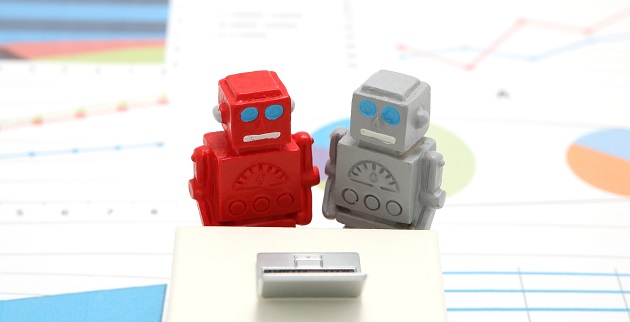It’s day 4 of National Customer Service Week. Following on from yesterday’s look at alternative channels of customer service, we now turn to self-serve customer service.
Do It Yourself?
Consider these modern-day scenarios
You’re in the supermarket. You have a basket’s worth of shopping. It’s not busy. Do you go to the self-checkout or staffed till?
You need to update your address for your car breakdown cover. Do you ring customer services or self-serve via an online portal?
No matter which you pick, you’ll still have expectations about the service you receive, be that from man or machine. And as we know, meeting or exceeding expectations can be the difference between excellent, average and poor customer service.
Traditionally, the customer service adviser or sales assistant was the outward face of the company and could impact how you perceived a company. Now technology also takes on that mantle.
With more and more businesses offering a self-service option, not just retailers, but banks, insurers and utilities providers, what does this mean for customer expectations and therefore traditional customer service metrics?
Why customers choose to self-serve
It’s important to remember, that for some customers and some interactions, they’re not looking for a ‘fluffy’ customer experience. It’s more functional than that. They just want to do what they need to do with minimum fuss and inconvenience.
Measuring customer effort is an increasing trend and often a key KPI.
- Customers are time poor. Self-service can avoid time queuing, on hold and navigating exasperating menu options. It can be quicker and easier to do it yourself, be that a self-serve portal or self-checkout. Customers want speed and efficiency.
- Self-serve allows customers to do what they need to do at the time that suits them… rather than during call centre (i.e. working) hours. And customers are often online a lot of the time anyway. Therefore, convenience is key.
- Many like the reassurance of doing something themselves and seeing it confirmed, such as making a payment. Trust that what they’re trying to do has been done (and seeing it with their own eyes) is important.
- Sometimes customers don’t want to speak to anyone. The self-service checkout takes away the need to interact: we don’t have to make eye-contact or small talk with a machine, or worry that it is judging our choices or being overly friendly. Discretion can therefore be a motivator.
- In our experience of running customer experience programmes, lack of consistency is a bugbear: different responses from different advisers is confusing and frustrating. A machine is dependable and will always give you the same answer.
When self-serve goes wrong
If the self-checkouts can’t recognise an item, that’s annoying. If your online banking fails and you can’t make a payment, that can be calamitous.
Human alternatives therefore have to be 100% perfect 100% of the time. Anything less is intolerable.
When a person is better
- FAQs are all well and good and a useful first source of information. But what if your question is specific to you? An adviser should have the knowledge to answer off the wall questions or at least take responsibility to find the answer for you.
- A person can (should) deal with something out of the ordinary. Flexibility, therefore, is something customers value.
- Similarly, machines aren’t usually designed to solve problems. A person can take ownership for ensuring an issue is rectified.
- A machine can’t give you advice: a person can (again should). After all, they are often called Customer Service Advisers.
- Compassion and empathy are key human traits that customers expect when they contact customer services. A machine can’t understand a customer’s unique situation.
What should you be measuring?
There’s actually a lot of overlap between what customers want when dealing with a person or a machine. However, a human interaction should offer characteristics over and above what a machine can.
Convenience, dependability, trust, speed, efficiency, confidentiality and discretion are all things that you get from a machine and should get from a person.
They are hygiene factors; things which, if are absent, will cause dissatisfaction, but are generally expected and therefore not necessarily drivers of satisfaction.
So it’s important to measure these things across all customer touchpoints, to ensure that you are performing well and not causing dissatisfaction.
Where a company can excel and differentiate is in those human qualities:
Giving advice, compassion, empathy, flexibility, knowledge, taking ownership and responsibility.
Identifying what really has an impact
Key driver analysis is one of our most frequently used techniques. It identifies what has the most impact on customer satisfaction (or recommendation or dissatisfaction or any key metric you care to measure). Not only that, it tells you which driver(s) should be prioritised for improvement by comparing each against performance.
You can then identify which are those hygiene factors to be maintained, the strengths you should be promoting and most importantly the areas where you need to prioritise improvement and fix.
And that is invaluable to offering the best customer service be that self-serve or adviser led.
For more information, download our guide to advanced analytics.

